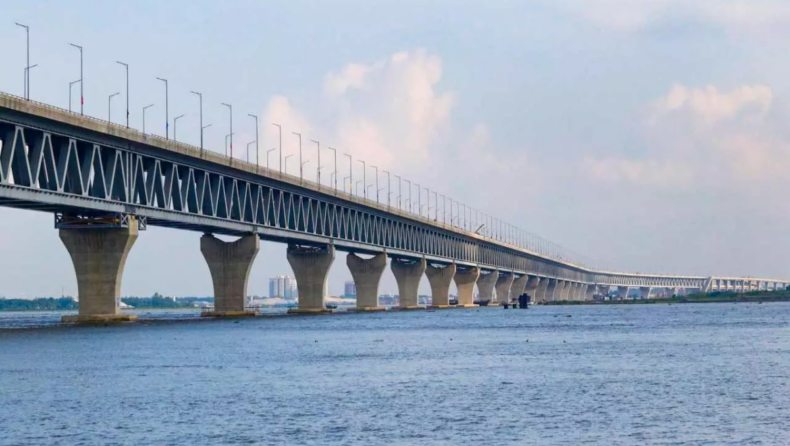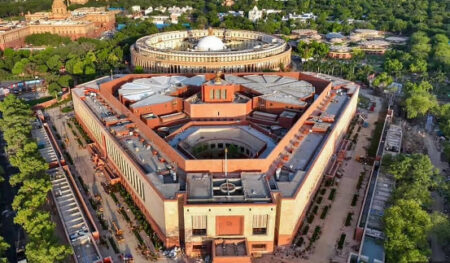Bangladesh’s Prime Minister Sheikh Hasina has transformed hardship into an opportunity with the opening of the Padma Bridge. Economists predict that Padma Bridge will increase yearly GDP growth by 1.2%.
The official opening of the 6.15-kilometer rail-road bridge over the Padma River on June 25, Saturday, Bangladesh has officially entered its grownup phase as a major turnaround story.
Since Bangladesh’s bloody and damaged independence from Pakistan, this is the nation’s largest infrastructure project. But after 50 years, and with Sheikh Hasina in charge, this youngest country in South Asia has flourished to become a model for the region.
Bangladesh can complete the $3.9 billion (initial estimate) Padma Bridge project with its own resources and has made a just repayment. The US, a long-time foe of Hasina’s, backed with Pakistan in the 1971 freedom struggle and allegedly convinced the World Bank to abandon the initiative.
The positive economic outlook coming from the Padma Bridge will provide PM Hasina a boost as the parliamentary elections scheduled for December 2024 get near. Even her detractors concede that Hasina has a stellar record of economic progress and human development over her thirteen years in power, despite opposition demonstrations regarding enforced disappearances and manipulated elections.
But for Sheikh Hasina, this is a time of immense pride and a confirmation of the “Golden Decade of Development” that Bangladesh has experienced under her incisive leadership.
After the World Bank halted the funding proposal, alleging “credible evidence of corruption,” which was later thrown out by a Canadian court, she made the decision to complete the project using Bangladesh’s own resources.
Padma Bridge will boost the GDP-
The Padma Bridge, which will now connect the nation’s capital, Dhaka, with all southern regions and its second port, Mongla, is expected to add 1.2% annually to GDP growth, according to economists like former Bangladesh Bank governor Atiur Rahman.
Numerous national economists also claim that the bridge will significantly increase the country’s GDP by $10 billion.
Now that the Padma and Jamuna rivers in Bangladesh have been spanned, the nation’s economy is integrated and well-connected.
Padma Bridge will boost the regional trade-
India would be the biggest gainer as a result of the Padma Bridge’s dramatic increase in regional connectivity. Half as much time will be saved by rail and road between Calcutta and Dhaka as well as between West Bengal and the north-eastern states of India.
According to a World Bank report from the previous year, better connectivity between Bangladesh and the neighboring Indian states can increase exports by 182 to 297 percent and national incomes of the two countries by 8 to 10%.
“The direct users will immediately profit from the bridge’s opening to rail and road traffic. According to Zahid Hussain, a former lead economist at the World Bank, “the road distance from Dhaka to nearly all major destinations in the southwest region will be reduced by 100 kilometers or more, bringing tremendous savings in the time and costs of passenger and commodity movement, vehicle operation and maintenance costs, and reducing wasteful burning of fossil fuels.
International trade between neighboring nations including India, Nepal, Bhutan, and Myanmar is also anticipated to have significant effects.
An Asian Development Bangladesh (ADB) study from 2011 found that the southwest, which makes up about 27% of the nation’s land area and is home to almost a quarter of its more than 160 million inhabitants, has remained one of Bangladesh’s least developed regions. This is largely because the region lacks connectivity to the rest of the nation.
According to the World Bank’s appraisal report, the Padma Bridge will be a crucial component of the Trans-Asian railway network systems (Sylhet-Kanchpur-Dhaka-Mawa-Jashore-Benapole, connecting Calcutta in eastern India) and Asian Highway One.













